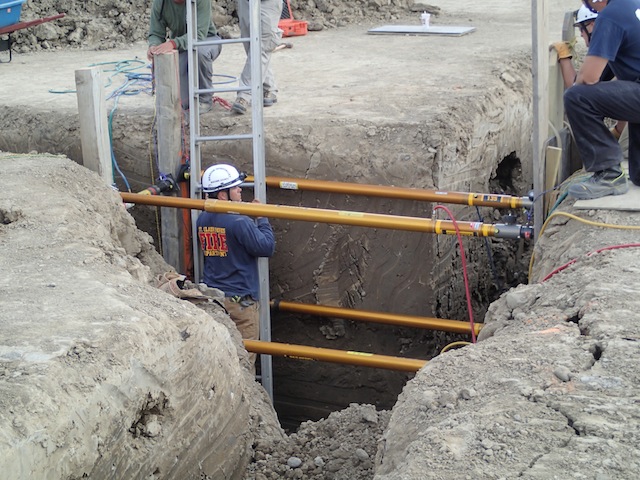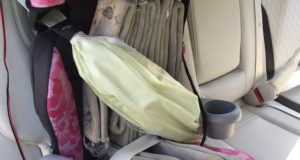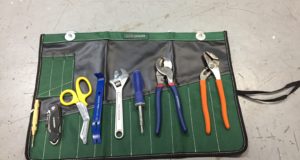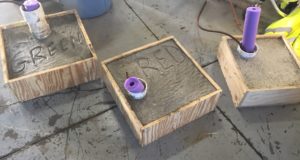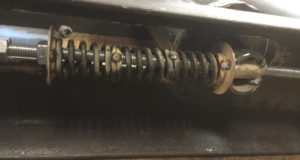Here is a valuable explanation on a trench shoring set-up that doesn’t guarantee protection from MI-TF1 rescue veteran Ron Zawlocki. First the picture and then the numbers.
IT’S A TECHNIQUE / DESIGN FLAW NOT A TOOL ISSUE
“LIKE” FIRST DUE TACKLE ON FACEBOOK
A method of shoring the end wall of a trench has recently come to my attention. In this shoring design the resistance to the potential force from the end wall relies on the strut pressure from a couple of pneumatic struts which are placed on vertical walers a few feet away from the end wall. The activation force of the struts attempting to resist the end wall soil force can be figured by multiplying the area of the strut cylinder by the pounds per square inch (psi) of air pressure. In this case we have Paratech Gray struts (2.5″ diameter) shot at 250 psi which provides a total pressure (force) of 1226 pounds. The end wall is 4 feet wide and 8 feet deep with a tributary area of 32 square feet. At any cave in you should consider the lateral force of the soil to be @ 60 (psf) pounds per square foot times the depth. With struts placed at 2 feet below the lip and 2 feet above the floor (6 feet deep) the total wall force is shared (but not equally). The top half would be 16 square feet and the force would be 60 psf with the depth of the strut(s) at 2 feet. Using a simplified formula (square feet x pressure x depth) we get the potential force on the upper half of the wall @ 1,920 pounds. The same formula gives us the force on the lower half at 5,760 pounds. The total lateral force on the wall is 7,680 pounds.
The shoring design being used provides a resistance force of 1226 at the upper half (where we have 1920 pounds of lateral soil force) and a resistance force of 1226 pounds at the lower half (5,760 pounds of lateral soil force). Now there is a friction coefficient that needs to be applied but that is way above my pay scale. I do know from experience that wood slides on dirt pretty easily so that friction coefficient won’t make a lot of difference. You can see something similar in the Rescue 2 strut failure video below. The resistance in the Rescue 2 shoring system is also completely reliant on strut pressure and friction.
Our test results showed that this entire shoring system catastrophically failed (with very little warning) after just a few hundred pounds of force was applied. No where near the 7680 pounds of potential force that this end wall shore was attempting to resist.
Pass it on!
 First Due Tackle Pass It On – Firefighter, Rescue & Extrication Training
First Due Tackle Pass It On – Firefighter, Rescue & Extrication Training
